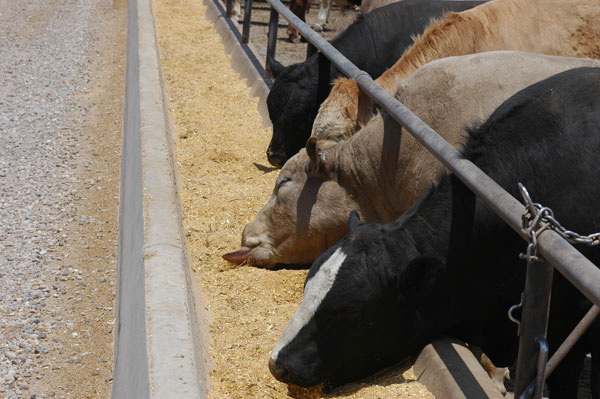Cattle Feeding Returns Improve But Still Challenging
Though any improvement in cattle feeding returns is welcome, Glynn Tonsor cautions that underlying challenges will likely grow more troublesome as cattle supplies contract further.
October 22, 2012

The cattle feeding industry has seen plenty of economic wrecks over the years, but dwindling, high-priced calf supplies and historically high feed costs continue to chart new territory.
“Consistent with other approaches to assessing finishing returns, our approach suggests returns from closeouts in recent months have been historically low (-$265.35/steer and -$253.16/steer sold in July and August, respectively),” says Glynn Tonsor, Kansas State University agricultural economist, in the most recent In the Cattle Markets newsletter.
A Closer Look: Feedyards Determined To Stay In The Game
“These significantly negative returns mainly reflect a squeeze resulting from placements being purchased prior to the spring price pullback, increases in feeding cost of gain triggered by this year’s drought, and the lack of an offsetting increase in fed cattle prices," he says. "During the remaining months of 2012, we project returns to progressively improve reflecting mainly adjustments in both feeder and fed cattle prices as compared to those underlying recent closeouts.”
Though any improvement is welcome, Tonsor cautions that underlying challenges will likely grow more troublesome as cattle supplies contract further.
Breaking Down The Numbers: Snug Supplies Underpin Calf And Feeder Markets
“In aggregate, the feeding industry appears to have not initiated substantial adjustments, which could alleviate excess capacity concerns,” Tonsor says. “That is, there is too much bunk space relative to available cattle supplies which will continue to pressure returns for many feedlots. Moreover, this excess capacity situation has benefited over prior months by the accelerated imports of cattle from Mexico and multiple impacts of our domestic drought."
However, he adds that, going forward, imports from Mexico will likely decline and any net expansion in the U.S. cowherd will pull heifers from the feedlot placement pipeline. "Both of these adjustments will exacerbate the excess capacity situation and managers are encouraged to take note of implications for their operation.”
About the Author(s)
You May Also Like




.png?width=300&auto=webp&quality=80&disable=upscale)
